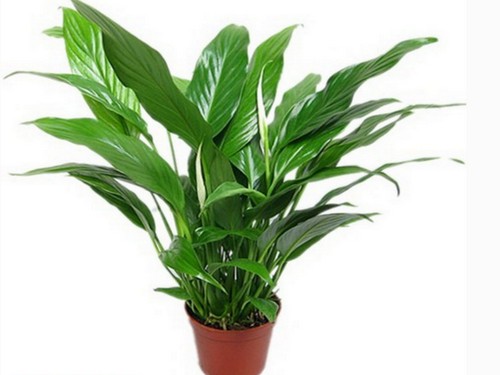What if the leaves of potted Catharanthus roseus turn yellow
Catharanthus roseus culture should be fertile and well drained soil, for light-loving plants, the growing period must have sufficient sunshine, like warm, slightly dry and sunny environment, fertilization can be taken every ten days alternately compound fertilizer and liquid fertilizer application method, avoid dampness and fear of waterlogging, basin soil watering should not be too much, the plant itself is toxic, so it is more resistant to diseases and insect pests, stem and leaf rot mainly occurs in the rainy season, pay attention to prevention and control.
Potted Catharanthus roseus in the growing period, such as insufficient fertilization and too much watering or poor drainage, will cause the leaf color to turn yellow. In view of the above reasons, strengthening maintenance in time can avoid leaf yellowing. What if the leaves of potted Catharanthus roseus turn yellow?
1. Soil alkalinity.
Catharanthus roseus does not have a high demand for soil, but avoid alkaline soil. Planting Catharanthus roseus with alkaline soil will lead to Catharanthus roseus leaves yellowing and not blooming.
Solution: the acidity and alkalinity of the planted soil should be tested, and if the soil is partial to alkali, it should be treated.
2. Poor soil permeability.
Poor soil permeability is also the reason for the yellowing of Catharanthus roseus leaves. Many people choose to plant Catharanthus roseus with high stickiness, poor water permeability and poor air permeability, which makes no problem in the short term, but for a long time, the poor permeability of the soil results in poor breathing in the lower roots of Catharanthus roseus, resulting in frequent yellow leaves and fallen leaves. Catharanthus roseus requires loose matrix and good ventilation, such as planting in clayey alkaline soil, resulting in poor root development due to soil consolidation, affecting the growth of aboveground parts and yellowing leaves.
Solution: choose sandy soil with good drainage performance to plant, but also pay attention to not watering too much.
3. Lack of light
Catharanthus roseus likes a warm, sunny environment. If potted plants are placed in shade for a long time, the leaves will turn yellow due to lack of light.
Solution: Catharanthus roseus is a light-loving plant, there must be sufficient sunshine during the growing period, the leaves are green and shiny, the flowers and colors are bright, and proper lighting should be carried out in daily maintenance.
4. Overwatering
Catharanthus roseus avoid dampness and fear of waterlogging, basin soil watering should not be too much, otherwise it will affect root breathing and cause old leaves yellow, new leaves yellow.
Solution: strictly control watering, it is better to dry, and pay attention to drainage in rainy season.
5. Too little watering
Catharanthus roseus can not be watered too much or too little, too little or not watered thoroughly for a long time, the plant can not absorb enough water, the new leaves will wilt, and the old leaves will turn yellow and fall off.
Solution: pay attention to watering, basin soil can be watered after dry, watering should be thoroughly.
6. Excessive fertilization
Many people worry about growing flowers at home for a long time. If there is not enough fertilizer, they will occasionally put some fertilizer or something into the potted soil, hoping to absorb more flowers. In fact, too much fertilizer will cause root burning and damage the root system. The whole Catharanthus roseus is depressed, grows slowly, blossoms less, and its petals become smaller.
Solution: Catharanthus roseus can be applied alternately by compound fertilizer and liquid fertilizer, and don't apply fertilizer casually at other times.
Time: 2019-06-01 Click:
- Prev

Causes and Solutions of yellowing leaves of potted Desert Rose
Legend has it that in the vast Gobi Desert, there is a kind of stone that has been growing for thousands of years. It is the crystal of a plant. The seeds of this plant are born in pairs, and after flowering, the roots are connected, and the flowers are like roses; if one of them dies, the other will no longer bloom.
- Next

Why does the white palm not bloom? What if the white palm does not bloom?
Recently, many friends have been asking this question: Why did the white palm I bought bloom once and never bloom again? Or few flowers, very small flowers, flowers color is not white or green? The white flower is not actually a flower. It consists of a white bract and a yellow-white spike.
Related
- Fuxing push coffee new agricultural production and marketing class: lack of small-scale processing plants
- Jujube rice field leisure farm deep ploughing Yilan for five years to create a space for organic food and play
- Nongyu Farm-A trial of organic papaya for brave women with advanced technology
- Four points for attention in the prevention and control of diseases and insect pests of edible fungi
- How to add nutrient solution to Edible Fungi
- Is there any good way to control edible fungus mites?
- Open Inoculation Technology of Edible Fungi
- Is there any clever way to use fertilizer for edible fungus in winter?
- What agents are used to kill the pathogens of edible fungi in the mushroom shed?
- Rapid drying of Edible Fungi

